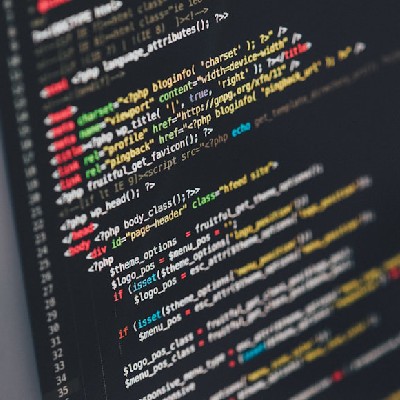
Particle Network pricePARTI
Particle Network (PARTI) has been listed on Bitget spot trading market, you can quickly sell or buy PARTI. Trading Link: PARTI/USDT.
New users can get a welcome gift package worth 6200U, Claim it now>>
PARTI/USD price calculator
Particle Network market Info
Live Particle Network price today in USD
Do you think the price of Particle Network will rise or fall today?
Now that you know the price of Particle Network today, here's what else you can explore:
How to buy Particle Network (PARTI)?How to sell Particle Network (PARTI)?What is Particle Network (PARTI)What would have happened if you had bought Particle Network (PARTI)?What is the Particle Network (PARTI) price prediction for this year, 2030, and 2050?Where can I download Particle Network (PARTI) historical price data?What are the prices of similar cryptocurrencies today?Want to get cryptocurrencies instantly?
Buy cryptocurrencies directly with a credit card.Trade various cryptocurrencies on the spot platform for arbitrage.Particle Network price prediction
When is a good time to buy PARTI? Should I buy or sell PARTI now?
What will the price of PARTI be in 2026?
In 2026, based on a +5% annual growth rate forecast, the price of Particle Network(PARTI) is expected to reach $0.1068; based on the predicted price for this year, the cumulative return on investment of investing and holding Particle Network until the end of 2026 will reach +5%. For more details, check out the Particle Network price predictions for 2025, 2026, 2030-2050.What will the price of PARTI be in 2030?
About Particle Network (PARTI)
What Is Particle Network (PARTI)?
Particle Network is a Layer-1 blockchain project designed to simplify the user experience in the Web3 ecosystem. Launched in 2022, it addresses several key issues such as fragmentation across different blockchains and complicated user interfaces. As the blockchain space grows, the number of Layer-1 and Layer-2 blockchains increases, which causes liquidity fragmentation, high fees, and complex cross-chain transactions. Particle Network aims to solve these problems by offering a unified system that enables users to interact with multiple blockchains from a single account, without needing to manage different wallets or deal with bridging assets.
The core feature of Particle Network is its Universal Accounts, which provide a single, unified account address and balance that works across all supported blockchains. This allows users to seamlessly interact with decentralized applications (dApps) and conduct transactions on various blockchains without worrying about managing multiple tokens or private keys. Through Universal Liquidity and Universal Gas, users can access and transfer assets between chains efficiently, while also paying for transactions with any token, further streamlining the experience.
By implementing chain abstraction, Particle Network removes the complexity typically associated with blockchain ecosystems. Instead of needing to switch between wallets or worry about different gas fees on each blockchain, users can access all their assets and perform cross-chain transactions using a unified interface. This solves the problem of fragmented user experience and liquidity across multiple chains, a major hurdle to mainstream blockchain adoption.
How Particle Network Works
Particle Network operates on a modular Layer-1 blockchain called the Particle Chain. The network is designed to allow seamless interactions between multiple blockchains through a set of features and technologies:
1. Universal Accounts
Users are provided with a single, unified account that works across all supported blockchains, allowing them to interact with different dApps and perform transactions without switching wallets or managing multiple tokens.
2. Universal Liquidity
This feature ensures that assets are aggregated across different chains, enabling users to move assets easily and access them wherever they are needed.
3. Universal Gas
With Universal Gas, users can pay for transaction fees using any token, regardless of the blockchain they are interacting with. This feature removes the need to hold different gas tokens for different blockchains.
4. Decentralized Infrastructure
The Particle Chain relies on a modular architecture to coordinate cross-chain transactions. It uses several core modules to facilitate smooth operations:
- Master Keystore Hub: Ensures that account information is synchronized across chains, maintaining a consistent user balance and account state.
- Decentralized Bundler: Executes user transactions on their target chains through Universal Accounts.
- Decentralized Messaging Network: Monitors and synchronizes cross-chain activities, ensuring that transactions are properly settled and executed.
5. Dual Staking
To secure the network, Particle Chain uses a dual staking system, combining Proof-of-Stake (PoS) with Bitcoin staking, providing enhanced security and network stability.
By connecting all these components, Particle Network ensures that users can interact with multiple blockchains in a seamless and efficient manner without dealing with the complexities of managing multiple assets or wallets.
What Is PARTI Token?
The PARTI token is the native cryptocurrency of the Particle Network and plays a key role in its ecosystem. As the governance token, PARTI is used for voting on network proposals, giving holders a say in the future development of the network. Additionally, PARTI is essential for the Particle Chain's functionality, facilitating Universal Gas payments, which allow users to pay for transaction fees across different blockchains using any token.
Particle Network has a fixed supply of 1 billion PARTI tokens, with allocations for team and advisors, private sales, liquidity provision, and community growth. The tokenomics are designed to incentivize early adoption and ensure long-term stability. For example, PARTI can be used to settle cross-chain transactions, which helps resolve the fragmentation of gas fees across multiple blockchains. This makes it easier for users to interact with various chains without needing to manage multiple gas tokens.
The token is also used to support the Universal Liquidity system. In this system, PARTI plays a central role in settling cross-chain transactions, making it an integral part of the user experience. Even if a user pays for a transaction fee in another token, PARTI is used to settle and convert the value into the required fee, maintaining liquidity and smooth operation within the network.
Should You Invest in Particle Network?
Investing in Particle Network could offer opportunities, especially if you're interested in projects that simplify Web3 interactions. Its solutions like Universal Accounts and Universal Gas address common blockchain challenges. However, the project is still in early stages, and its success depends on adoption and continued development. As with any investment, it’s important to consider the risks, especially with competition in the blockchain space.
Conclusion
Particle Network aims to make blockchain easier to navigate, offering solutions to common pain points like fragmentation and complex cross-chain transactions. While promising, it’s still evolving, and its long-term success will depend on broader adoption and technological progress.
Related Articles about Particle Network
Particle Network (PARTI): Pioneering the Future of Web3 with Chain Abstraction
Bitget Insights




PARTI/USD price calculator
PARTI resources
What can you do with cryptos like Particle Network (PARTI)?
Deposit easily and withdraw quicklyBuy to grow, sell to profitTrade spot for arbitrageTrade futures for high risk and high returnEarn passive income with stable interest ratesTransfer assets with your Web3 walletHow do I buy Particle Network?
How do I sell Particle Network?
What is Particle Network and how does Particle Network work?
Global Particle Network prices
Buy more
FAQ
What is the current price of Particle Network?
What is the 24 hour trading volume of Particle Network?
What is the all-time high of Particle Network?
Can I buy Particle Network on Bitget?
Can I get a steady income from investing in Particle Network?
Where can I buy Particle Network with the lowest fee?
Related cryptocurrency prices
Prices of newly listed coins on Bitget
Hot promotions
Where can I buy Particle Network (PARTI)?
Video section — quick verification, quick trading









